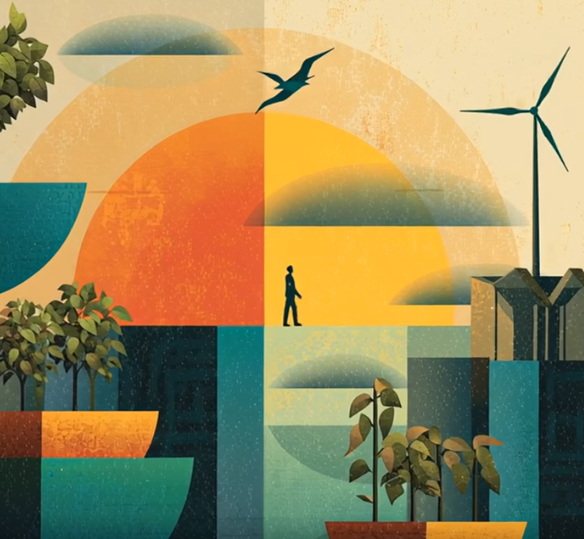Why Digital Can Change Our World

Posted
Categories
It’s not exactly time travel, but the most innovative companies do give us exciting new ways of seeing things.
My partner, Patrick, once penned a great article on unconscious bias in our decision making. We have all been trained to see the world in certain ways. We then see what we expect, and we take things for granted.
The best entrepreneurs don’t.
They ask, why, what if, why not? They challenge the traditional ways that we live and work, and even the way we see things. They can reformulate the very questions that we ask and, especially through applying digital solutions, come to surprisingly new answers.
What do we mean?
Take Charlie and Peter, who founded TravelTime Technologies by asking, “Why do we draw maps based on distance?” Well, it just seems too obvious to answer. Distance is fixed and measurable, real if you will. More subtlety, that is all that print technology historically allowed. Technology today now allows “live” and flexible mapping, where we can reflect different parameters – so, back to the “what if.”
What if we had maps based on time, not distance. Why not?
Normal maps can tell me how far Oxford is from London. Many companies can now tell me how long it will take to get there – point to point. But what if I want to discover where else I could reach outside of London in that hour, because I am focused on “my time?” That requires new mapping. We are redirecting the question from distance to time. We can also add another dynamic element to the map’s production – the actual mode of transportation. Whether we choose to go by bike, car, train or whatever, we will alter our map yet again.
This can be quite useful. Think about…
Looking for a house in a commuter belt, where you want to optimise the time of the journey to work… Looking for a new job that you can easily reach… Searching for that cheaper hotel that appears far from the city centre, but is really a short time away, perhaps by fast train. The applications abound.
But, why stop there? Why not a time-based map that allows you to select the “better” Co2 footprint of a journey. Maybe we learn that there is a very nice beach that is a “short time” away, which halves my Co2 footprint, relative to going on that weekend jaunt to Oxford. This type of mapping is now tailored towards me, and it gives me answers that I value.
Distance map? Time map? Impact map? One does not necessarily replace the other (distance still matters – think “range anxiety” around electric cars), and they serve different purposes. Innovation has allowed us to reflect on distance AND time, introduced the notion of choosing the method of arrival, and finally allowed us to take into account what some had previously labelled “externalities” – but others of us see as core to our lives.
The introduction of digital technology allows us to ask new, more refined questions, and thereby arrive at better answers. So, hats off to the best entrepreneurs – people like Charlie and Peter – who challenge the traditional way of looking at the world, and each in their own way, dares to make TimeTravel real.


